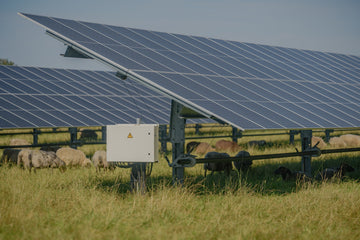As more tiny homes and small off-grid solar projects take off across New Zealand, AA Solar has noticed a recurring issue among customers using multiple 12V lithium batteries connected in series to create 24V, or similar setups scaled to 48V systems. Without proper battery balancing, these setups can suffer from charging inefficiencies, premature battery failure, and reduced system performance.
Why Battery Balancers Are a Must for Lithium Banks
Lithium batteries require balanced charging to maintain longevity and safety, unlike lead-acid variants. When two or more lithium batteries are connected in series, slight differences in internal resistance mean their voltages can drift apart during charging. This imbalance causes one battery to overcharge while the other remains undercharged, leading to reduced performance and early failure.
A battery balancer actively monitors each battery’s voltage during charging, automatically drawing down excess voltage from higher-charged batteries to align all cells. This ensures uniform charging, extends battery life, and protects your investment. For 24V systems, a single balancer between the two batteries is needed; 48V setups typically require three balancers installed between each pair in the series.

Battery Balancing Benefits for AGM and Gel Batteries
While AGM and Gel batteries are more forgiving than lithium batteries, incorporating balancing measures can still improve charging efficiency and increase battery lifespan. Balancing helps equalise cell voltages, prevent stratification, and reduce sulfation, which are common causes of capacity loss in these batteries.

Design and Installation Matter
Given the technical complexity, working with accredited solar installers and qualified solar engineers is essential when designing and sourcing parts for your off-grid solar system. Professionals can ensure your system is correctly sized, efficiently wired, balanced, and compliant with New Zealand laws governing electrical installations and solar energy systems.
NZ Compliance and Safety
Installation regulations in New Zealand require systems to be safe, reliable, and meet standards such as the AS/NZS 5033 for photovoltaic arrays. Certified components and skilled installers are critical to passing inspections and protecting your property.
AA Solar is SEANZ certified. With over 30 years of experience specifying and installing off-grid solar systems, we can manage the installation for you or work with a qualified electrician of your choice.
Key Takeaways
-
Battery balancing is mandatory for lithium to avoid damaging voltage imbalances.
-
Balancing also benefits AGM/Gel batteries, fostering better charging and longer life.
-
Always engage accredited solar installers and engineers for system design, installation, and compliance.
-
Properly balanced and engineered systems ensure reliable, efficient off-grid solar systems that meet NZ safety standards.
AA Solar can help guide you through best practices for battery balancing, component selection, and installation compliance. Contact us to work with trusted experts and protect your investment with an efficient, safe, long-lasting solar power solution.








